- europages
- >
- COMPANIES - SUPPLIERS - SERVICE PROVIDERS
- >
- environmental
Results for
Environmental - Import export
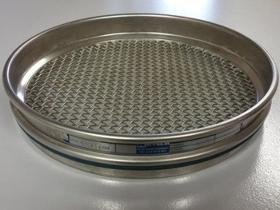
CRB ANALYSE SERVICE GMBH
Germany
Moisture content, loss on ignition – Particle size distribution – open porosity – Water absorption – Bulk density / Grain volume weight – Bulk density DIN 51081:2002-12 - Testing of oxidic raw materials and materials - Determination of mass change during annealing. DIN EN ISO 26845:2008-06 - Chemical analysis of refractory products - General requirements for wet chemical analysis, atomic absorption spectrometry (AAS) methods, atomic emission spectrometry with excitation by an inductively coupled plasma (ICP-AES). DIN EN 993-18:2002-11 - Test methods for dense shaped refractory products - Part 18: Determination of apparent density of granular materials by the water displacement method under vacuum.
Request for a quote
CRB ANALYSE SERVICE GMBH
Germany
We offer you the classification of 'old mineral wool' or such mineral fibres without RAL quality mark regarding their carcinogenic risk potential The carcinogenicity index, KI, is a dimensionless quantity and is determined according to the material composition of the mineral fibres to be evaluated. According to IFA / BIA method 7488, it is calculated from the sum of the mass contents (in MA-%) of Na2O, K2O, CaO, MgO, BaO and B2O3 minus twice the mass content of Al2O3. Vitreous mineral fibres are classified according to the KI according to TRGS 905 as follows, if their dimensions correspond to the WHO - fibre - definition: (length > 5µm, diameter < 3 µm, ratio length : diameter > 3 : 1) Glassy WHO fibres with a carcinogenicity index KI <= 30 are classified in category 1B. WHO vitreous fibres with a carcinogenicity index KI > 30 and KI < 40 are classified in category 2. WHO vitreous fibres shall not be classified as carcinogenic if their carcinogenicity index KI >= 40.
Request for a quote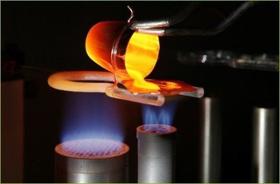
CRB ANALYSE SERVICE GMBH
Germany
We offer you all common analytical techniques for quantitative and semi-quantitative XRF, X-ray fluorescence analysis of various materials on up to 71 elements of solids. Fast and reliable analyses with high precision and accuracy down to the trace element range, on request as an immediate service – accredited test procedures – Wide element range up to 71 elements from fluorine to uranium in one measurement run, suitable for product and raw material monitoring or analysis of unknown materials –Various preparation techniques such as melt fusion, powder compaction, non-destructive measurements
Request for a quote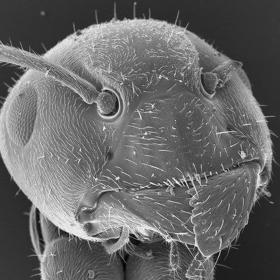
CRB ANALYSE SERVICE GMBH
Germany
The application possibilities of the scanning electron microscope, SEM in combination with the energy dispersive X-ray microanalysis, EDX are manifold. The areas of application listed here are only examples of some of the applications. Many other questions can be clarified with our microtextural and microanalytical test methods. Our services for you: X-ray microanalysis, EDX element mappings, line scans, SEM imaging, particle size determination, fiber thickness measurement, damage assessment
Request for a quote
CRB ANALYSE SERVICE GMBH
Germany
The term asbestos stands for a group of very resistant and non-flammable minerals with a fibrous structure. Until the beginning of the 1990s they were mainly used for thermal insulation or fire protection. Asbestos is found in brake pads and clutches, in electrical appliances, in machines and technical equipment, in heating systems and, above all, as a building material in a great many buildings. Asbestos fibres that enter the lungs can cause asbestosis, hardening and scarring of connective tissue, and cause cancer. In the meantime it has also been proven that asbestos substitutes, such as artificial mineral fibres, KMF, can cause cancer.
Request for a quoteDo you sell or make similar products?
Sign up to europages and have your products listed

EP EHRLER PRÜFTECHNIK ENGINEERING GMBH
Germany
with adjustable humidity and temperature to simulate the environmental conditions of a test specimen (e.g. household appliances, heating technology) The basis is a standard or climatic chamber (e.g. test kitchen, environmental simulation) with adjustable air humidity and temperature. On the basis of decades of experience in automotive test engineering, EP-E developed a concept in which the air flows in a circle (loop design). The result is a very excellent homogeneous temperature and humidity distribution. Through precise temperature and humidity control, it is possible to set different combinations of air conditioning and thus precisely adjust the required test conditions. The determination of the air flow (exhaust air volume) is carried out via a measuring section with the use of Laminar Flow Elements (LFEs). In order to determine the volume flow, pressure and temperature sensors are used to determine the air volume flow of the climatic chamber(s).
Request for a quote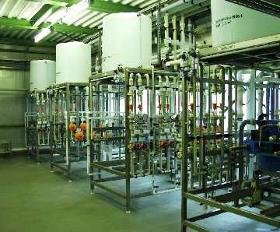
OSMO MEMBRANE SYSTEMS GMBH
Germany
Acid recovery out of pickling acids Salts and acids can be concentrated or separated from solutions by electrodialysis. For this, ions (anions and cations) are transported through the ion exchange membranes by the applied electrical field. Typical examples for the usage of electrodialysis are: Acid recovery at pickling lines Recovery of metals out of electro-plating rinsing water
Request for a quote
OSMO MEMBRANE SYSTEMS GMBH
Germany
Disposal of oil emulsions by ultrafiltration Increasing disposal costs and laws about oil disposal make a treatment of oily emulsions right necessary right where they come up. The main target of this treatment is the reduction of waste volume as much as possible. Ultrafiltration is one possibility to separate even stabile emulsions. Like chemical methods and flotation, ultrafiltration can not be used as stand-alone solution. Only by an effective pre-treatment and a pre-treatment of the oily concentrate, an optimized and economical emulsion disposal can be guaranteed. By the pre-treatment, coarse particles and free oil is separated; the pre-separation dewaters and concenctrates the flow, which comes as concentrate from the ultrafiltration. So, a maximum of dewatering and concentration of the oil can be reached. The emulsion is pumped through the membrane modules of the plant. On the membrane surface, oil is separated from the waste water. Waste water will pass the membrane and is colle
Request for a quote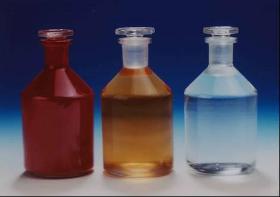
OSMO MEMBRANE SYSTEMS GMBH
Germany
Recovery of flexoprint dye Picture: printing dye (red); ultrafiltrate (orange); nanofiltration permeate (clear) Application: Conditioning and concentration of cardboard printing dyes (flexo print), e.g. paper bag manufacturing, corrugated board manufacturing. Conditioning of the rinse waters by ultrafiltration(UF): Recovery and recycling of dyes, separated by tonality Further conditioning of the permeate by nanofiltration(NF): Recovery of the rinse water Further conditioning of the UF-concentrate by evaporation / distillation as pre-stage for external disposal Advantages of the process: Recovery of dyes separated by tonality is possible and established Recirculation of the rinse water is possible and established Reduction of the waste water amount At existing waste water treatment plants (based on precipitation) amounts of sludge can be reduced enormously Compact and modular design Fully automized process - low personnel costs High degradation rate and efficiency (concerning CSB, Cu,
Request for a quote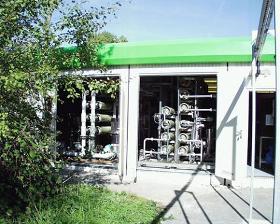
OSMO MEMBRANE SYSTEMS GMBH
Germany
Landfill leachate treatment Landfill leachate must not be leaded to the canalization or the recipient untreated. According to the guidelines of environmental protection, waste water hast to fulfill limit values of introduction and reusable water has to be cleaned and separated to be used as process water or maybe as drinking water. So, also landfill leachate – as many other industrial waste waters, too – has to be treated in a way, that introduction into a downstream sewage plant or recipient is according to the law. The multitude of ingredients of the landfill leachate has to be concentrated as much as possible, so that they can be bailed compact and without negative results for the environment. For the treatment of landfill leachate we offer the following processes of conditioning: Treatment of the leachate to reach recipient quality and concentration of the remaining ingredients in a way, that they can be leaded back to the landfill considering the water balance. Water analysis of
Request for a quote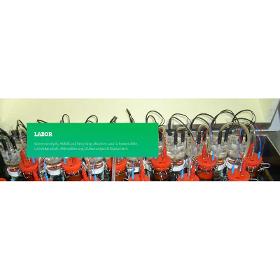
IUQ INSTITUT FÜR UMWELTSCHUTZ UND QUALITÄTSSICHERUNG DR. KRENGEL GMBH
Germany
Water analysis Drinking water investigation (TVO, Kalkaggressivität DIN 50930) microbiological examinations accredited sampling and analytics Basic and raw water investigations with identification of the ion balance limnological and marine sampling and testing Leachate investigations in the landfill area Operational monitoring of sewage treatment plants Operation monitoring of waterworks sewage sludge analyzes Investigation of concrete aggressiveness according to DIN 4030 Waste and recycling Examination of pollutants and expert support of dismantling of buildings and technical installations Site coordination by experts for safety and health protection when working in the contaminated area according to DGUV Rule 101-004 (formerly BGR 128) Health and safety plans for work in the contaminated area Emission monitoring of landfill sites (groundwater monitoring, leachate investigations, gas emission measurements, soil monitoring.
Request for a quote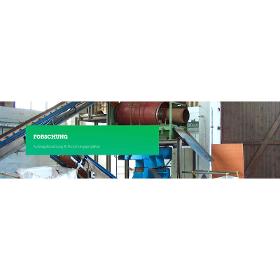
IUQ INSTITUT FÜR UMWELTSCHUTZ UND QUALITÄTSSICHERUNG DR. KRENGEL GMBH
Germany
The IUQ has worked on various research projects in collaboration with universities and colleges. Here, Bachelor and Master theses were supervised. We also worked for research projects for the Federal Environment Agency (UFO-Plan). As part of industrial projects, research projects were implemented in the field of recycling and water treatment in collaboration with companies and universities.
Request for a quoteResults for
Environmental - Import exportNumber of results
13 ProductsCountries
Company type